One of the things that has always appealed to me about the big Victorian cemeteries is their sense of drama, and their grand, elaborate memorials. Of course, there’s nothing new about the moneyed commissioning ostentatious memorials for themselves and their loved ones, but in the grand cemeteries of the big cities, like London, it’s possible to see lots of dramatic memorials clustered closely together, all vying for prominence in burial grounds that were designed to be visited by the living as well as being places for the dead to rest.
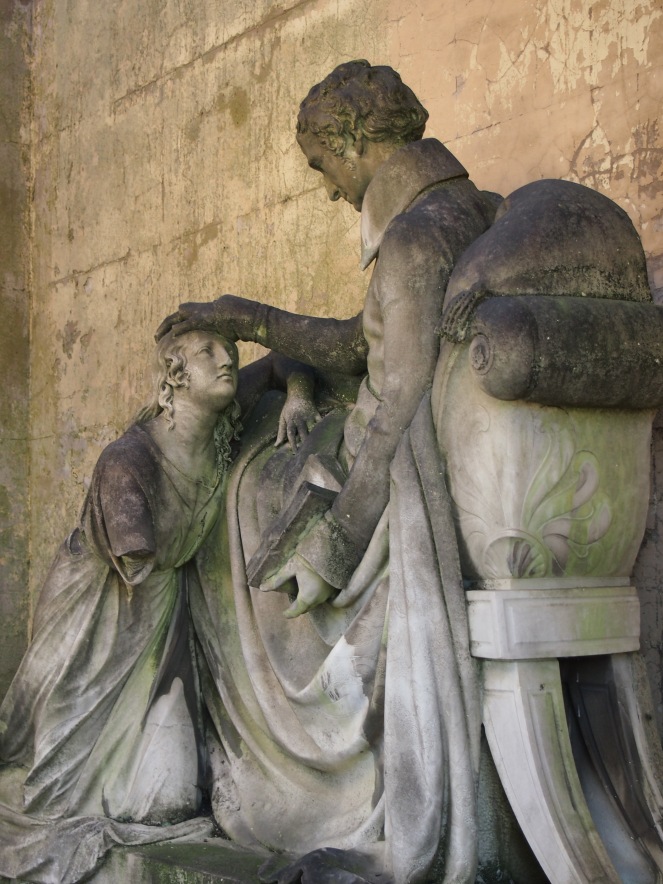
Kensal Green, one of London’s “Magnificent Seven” cemeteries, is home to many wonderfully dramatic monuments. Opened in 1833, it was inspired by the famous Père Lachaise cemetery in Paris, and the burial of one of King George III’s sons, Prince Augustus Frederick (died 1843), made Kensal Green a fashionable place to be laid to rest.
Many of Kensal Green’s grandest memorials can be found lining the straight avenue leading up to the cemetery’s Classical-style Anglican chapel. These prominent plots would have been expensive, and as the cemetery was laid out to be an attractive site as well as a burial ground, the cemetery’s owners would have been keen for the best plots to be adorned with impressive memorials.
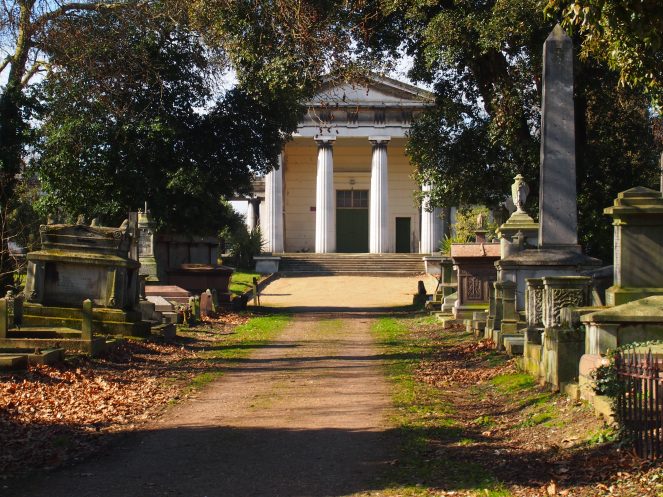
Many ornate mausolea can be found at Kensal Green, of differing architectural styles. Although the cemetery’s chapels are built in the Classical style, many of the graves and memorials at Kensal Green are inspired by Gothic architecture.
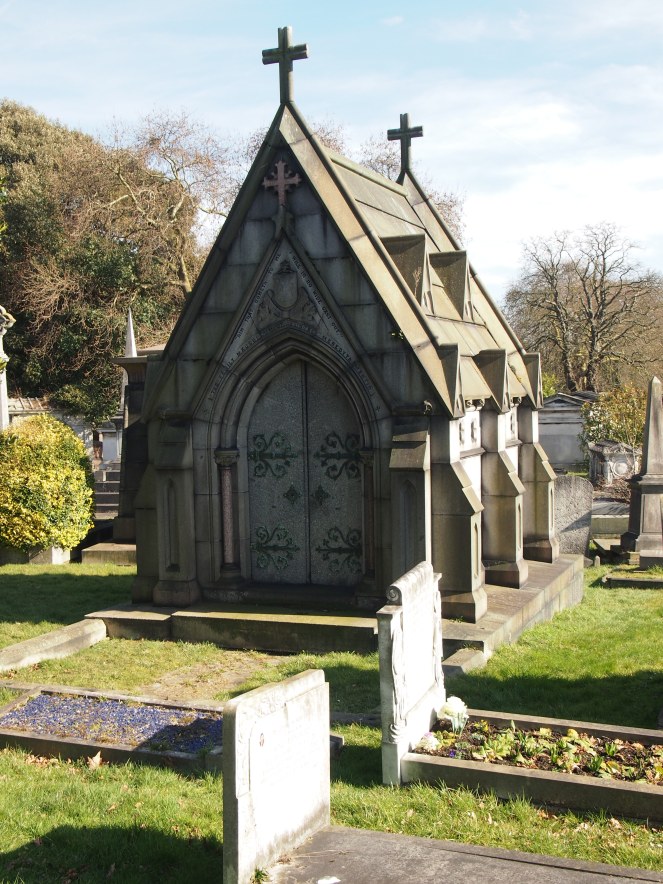

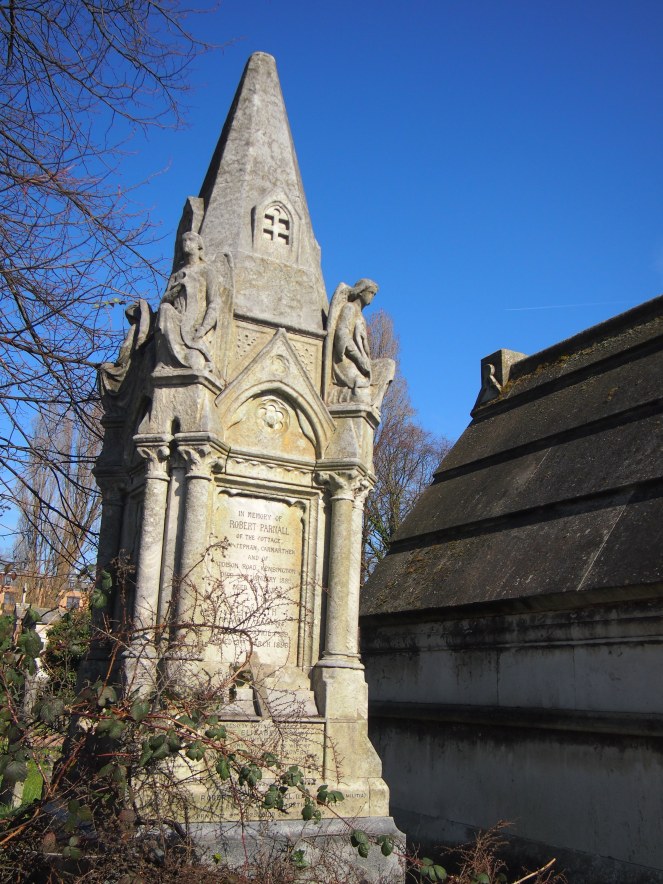
Following Napoleon’s conquest of Egypt and subsequent defeat by Nelson in 1798, ancient Egyptian artefacts began to flood into Europe and they inspired a new architectural style: the Egyptian Revival. This style was popular particularly during the first half of the 19th Century, and as well as inspiring the design of buildings it also influenced funerary monuments. The most famous Egypitan Revival structure in Britain is the Egyptian Avenue at Highgate Cemetery, but Kensal Green also has its share of monuments inspired by the architecture of ancient Egypt.


Egyptian Revival monuments are characterised by their columns, inspired by the monumental ancient temples of Egypt, and by the use of ancient Egyptian symbols, creatures and motifs.

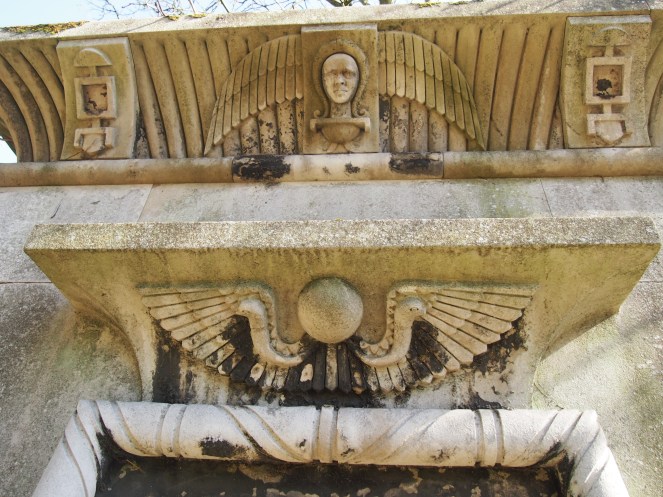
Classical style monuments continued to be popular throughout the Victorian period, characterised by their pillars and draped funerary urns. The Gothic style was sometimes considered to be associated with the Catholic church – possibly due to the Catholicism of Augustus Pugin, one of the early advocates of the Gothic Revival – and Classical style graves and mausolea therefore were sometimes a statement of one’s Protestant religion.

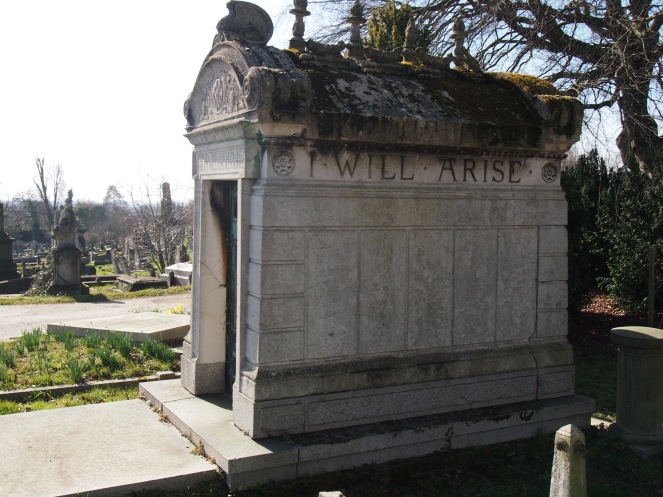
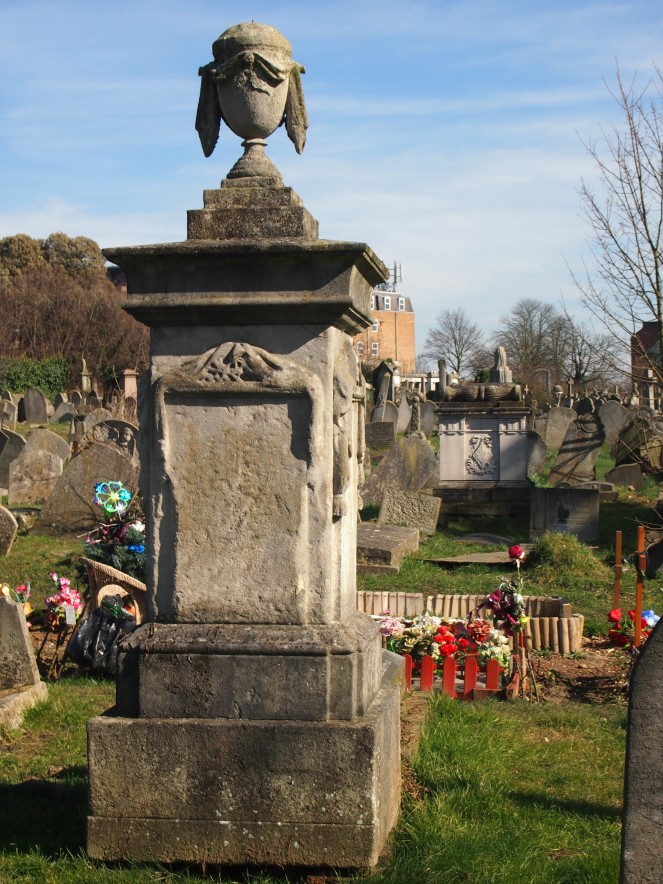
Quite a few monuments depict grief-stricken Classical-style women mourning over funerary urns.
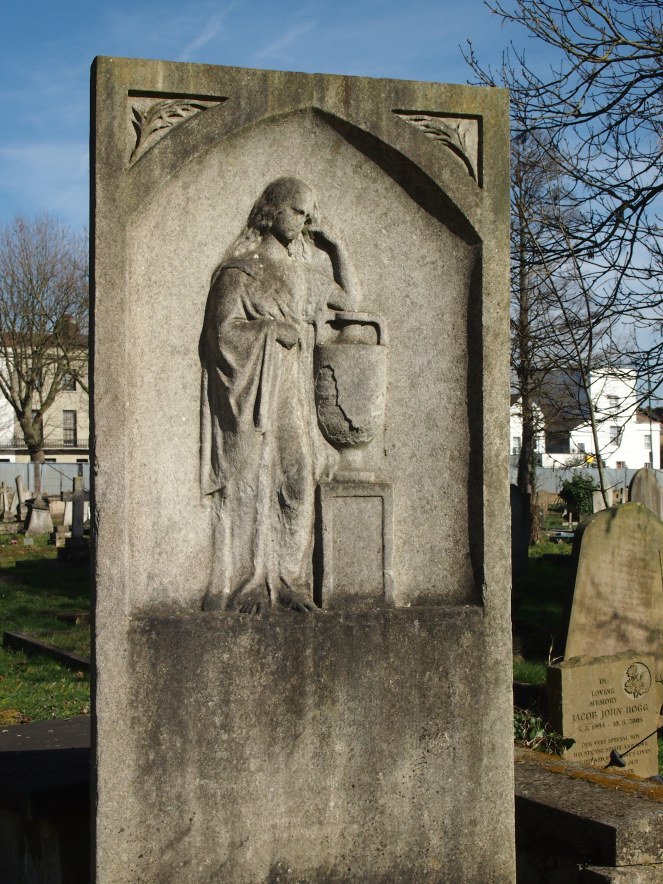
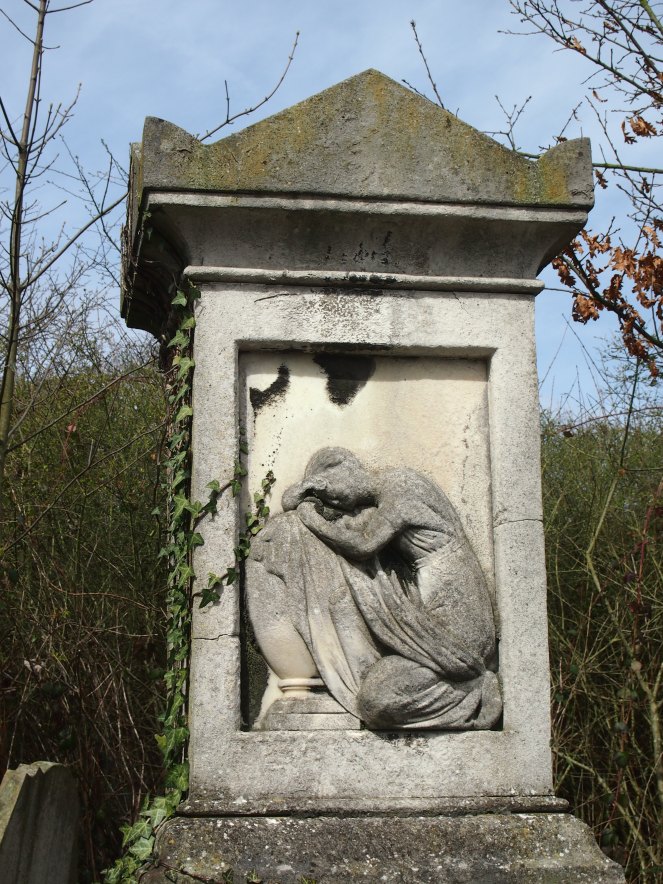
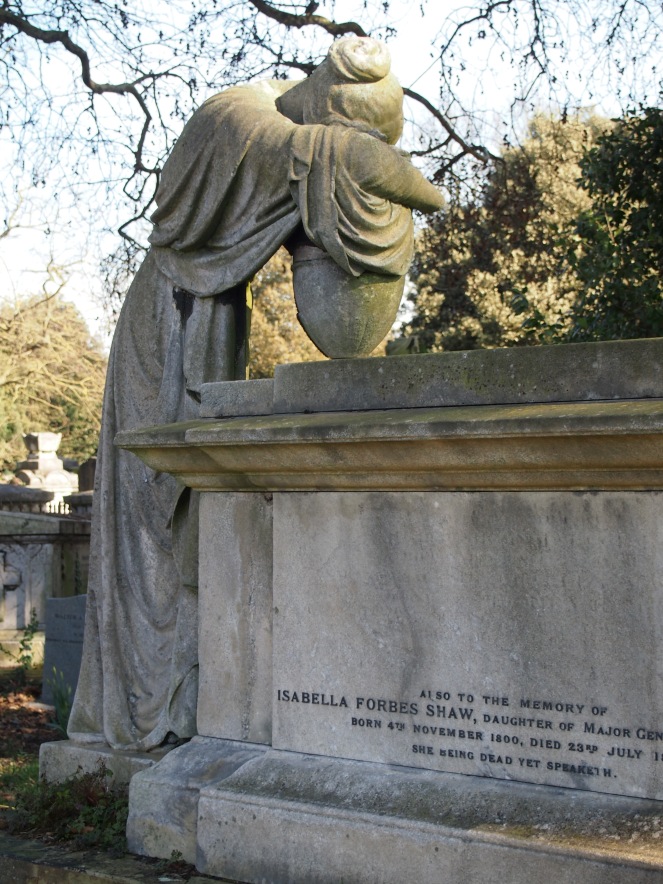
The broken column, another popular grave design in the Victorian period, symbolising the loss of the head of a family, or perhaps an individual who died young, also has its roots in Classical imagery.
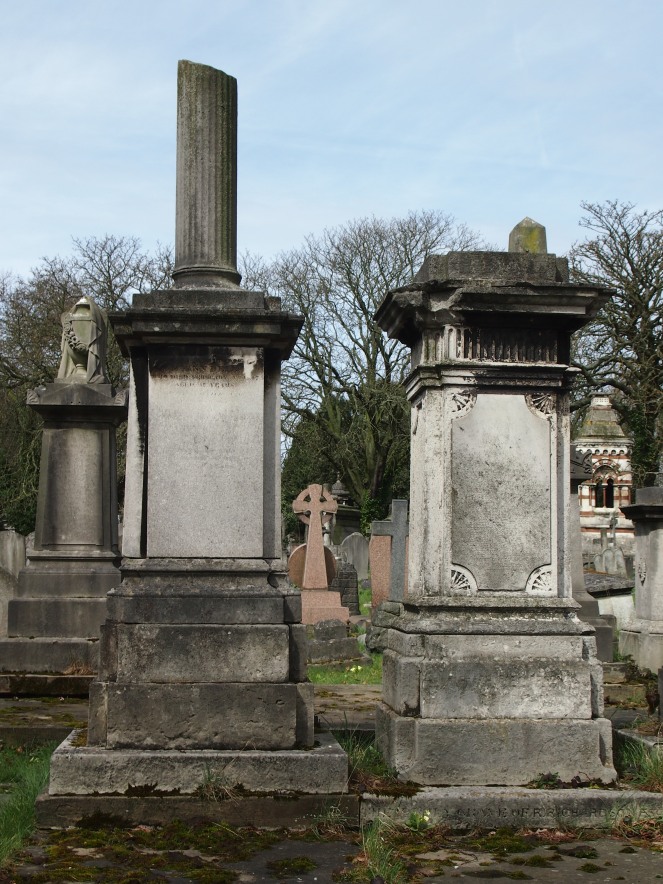
The grave of one of the greatest Victorians, Isambard Kingdom Brunel, continues to elude me. I’ve visited Kensal Green four or five times but have never managed to find his grave, despite knowing roughly where it is and what it looks like. Chances are, I’ve walked past it several times without noticing.
I seem to have something of a knack for missing many of the graves of famous individuals buried at Kensal Green. As well as Brunel, William Makepeace Thackeray, John William Waterhouse and George Birkbeck are all buried at Kensal Green – to name just a few of the illustrious figures whose rest in this magnificent cemetery.
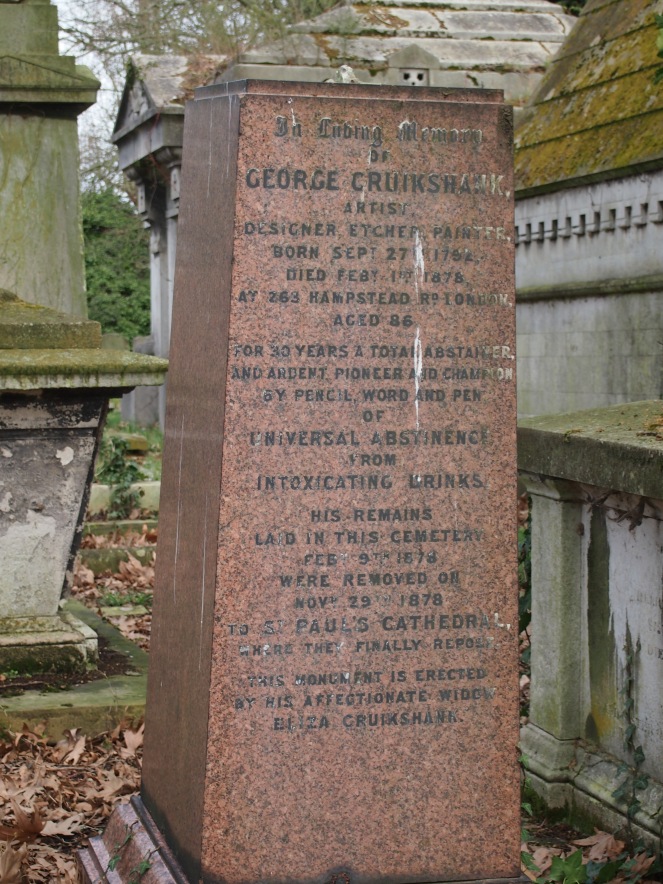
I did find a memorial to artist and satirist George Cruikshank, though. He was originally buried at Kensal Green after his death in 1878, but a few months later his remains were reinterred at St Paul’s Cathedral – a great honour, but I wonder how his family felt about him being dug up and moved? Perhaps the need to mourn him privately, rather than at St Paul’s, was one of the reasons why his widow chose to keep a memorial to him at Kensal Green.
As in so many Victorian cemeteries, angels are a common sight at Kensal Green. Although the angels that feature in the Bible tend to be male, the Victorian angels that adorn many graves are almost always female – beautiful, romantic and sad.

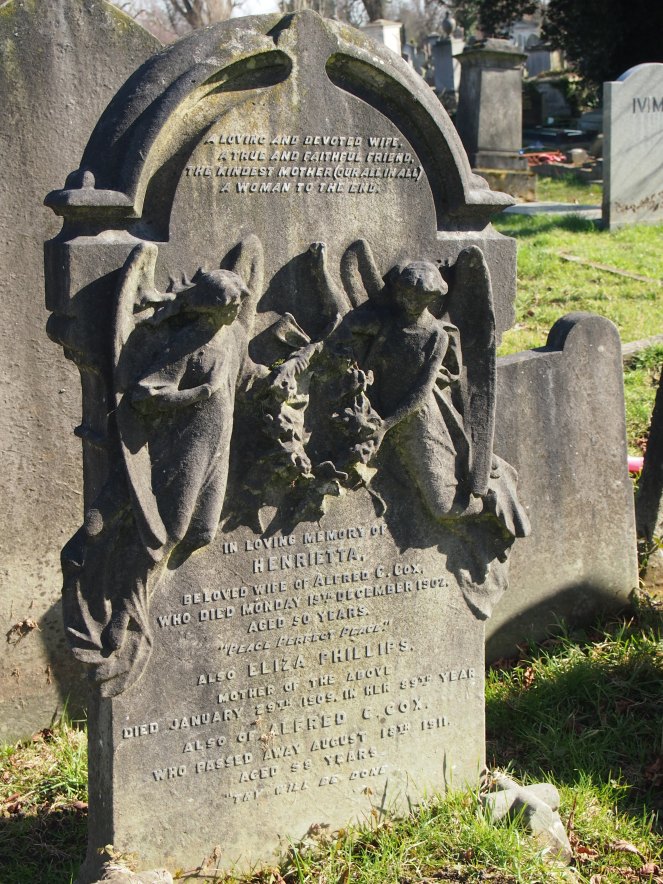
The angels pictured below remind me of the conclusion of the Doctor Who episode “Blink”, where the Weeping Angels attempt to steal the TARDIS. Fortunately, the Kensal Green angels have rather less horrifying expressions on their faces.
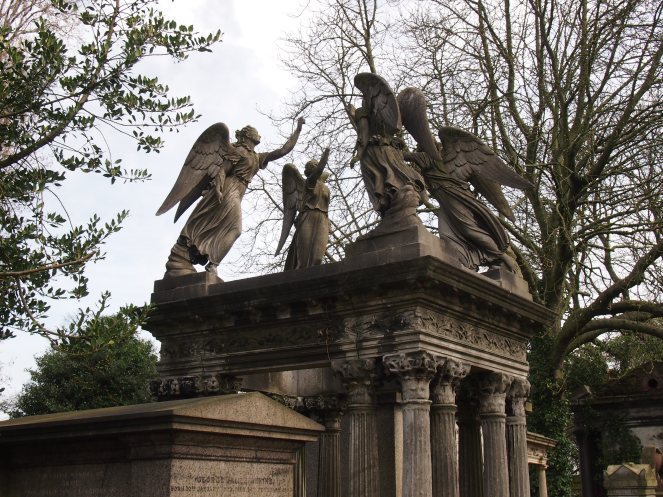
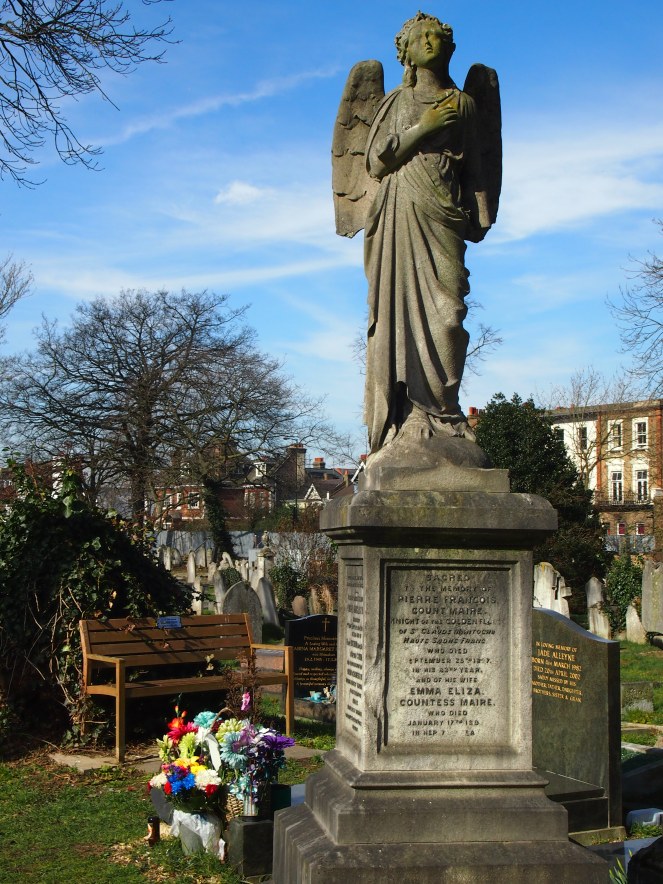
The downturned torch, symbolising life extinguished (as seen on the gates at Nunhead Cemetery, which was opened around the same time as Kensal Green), is also a popular motif on Victorian graves.
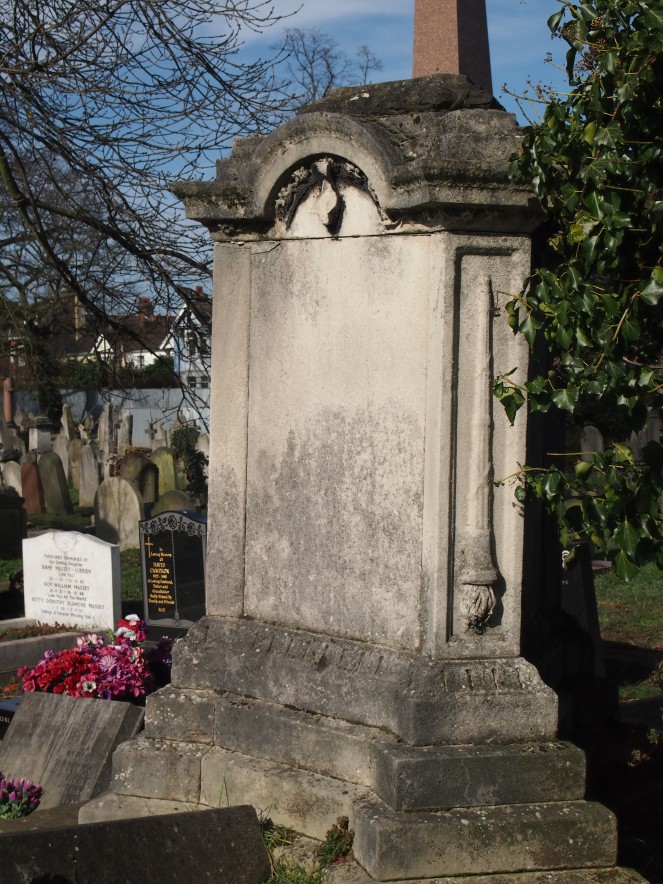
Unusually, the grave of Emma Rebecca Barrow Jenkins features flaming torches that are still upright, perhaps symbolising eternal life.
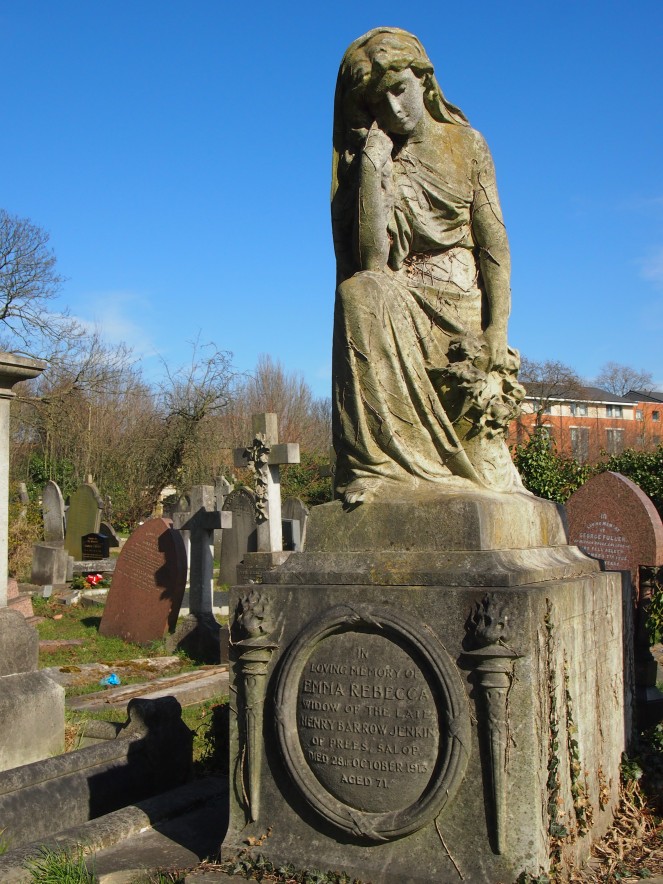
Away from the grand main avenues of the cemetery, one memorial towers over its neighbours. A figure stands with one hand outstretched towards the sky, while below it cherubs flank the portrait of a young woman. The memorial simply states “To Her.” There’s something about this stark use of language that’s incredibly powerful – to me it seems so sad, so grief-stricken.
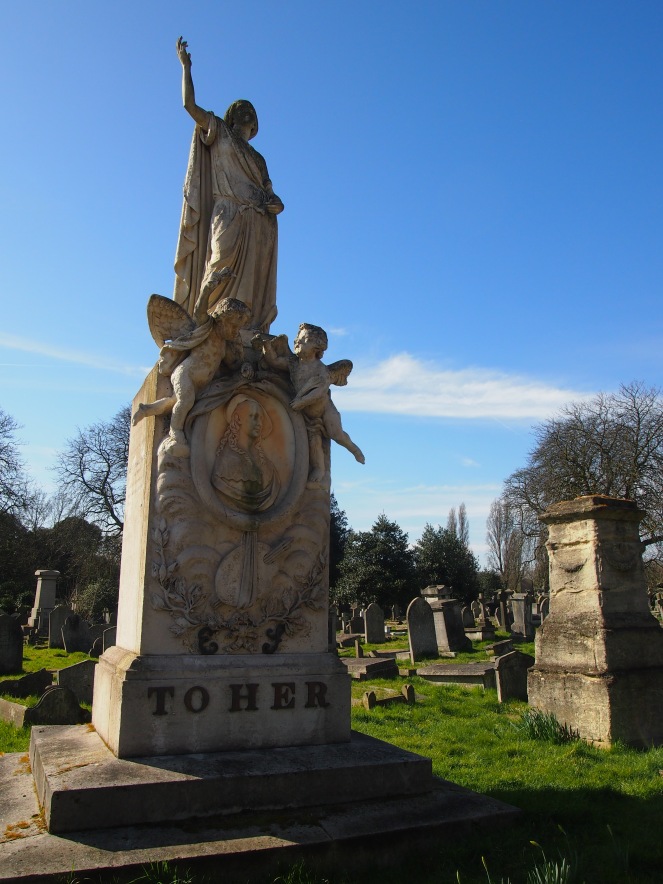
The woman immortalised by this wonderful memorial was Elizabeth Soyer, an artist whose work was exhibited at the Royal Academy – unusual for a woman of her time. She had been trained as an artist from a young age, and also exhibited her work in Paris, where she gained more recognition than in Britain. She died in 1842, aged just thirty or thirty-one, and her grieving husband Alexis Soyer (an innovative and celebrated chef) commissioned the dramatic monument that now marks both of their graves. Look a little more closely at it and you’ll see the artists’ easel and paintbrushes, an eternal reminder of Elizabeth’s talent and vocation as an artist.
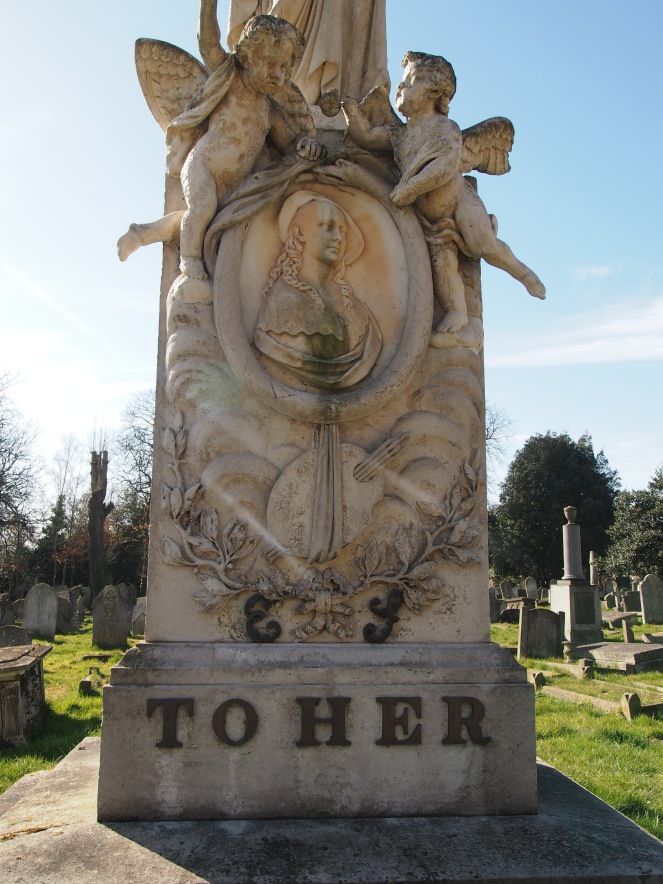
I came across the grave of another artist – fittingly, the portrait painter John Lucas is commemorated by a likeness of the man himself.

The tomb of Major-General Sir William Casement is inspired by his time in India – rather than columns, the roof of his monument is supported by statues of men in Bengali dress. It’s one of the most distinctive and unusual monuments at Kensal Green, although it’s far from the only grave of a person who served abroad in a British colony. Many graves, particularly those of military figures, carry references to service abroad, particularly in India.
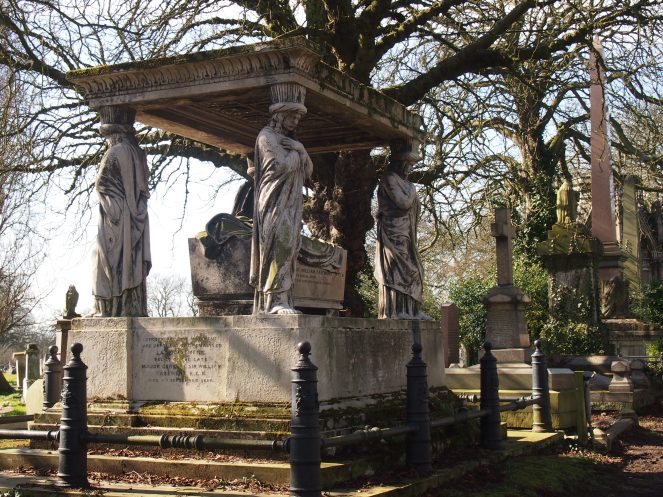
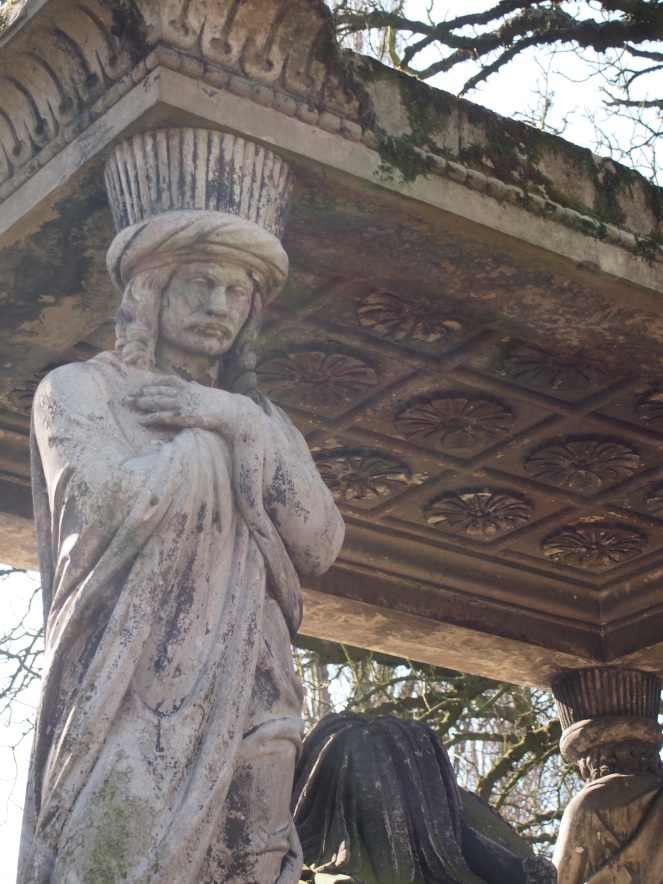
The gravestone pictured below has been designed to look rather like a throne. The inscription has been lost, but I like the way that it – intentionally or otherwise – reminds the viewer of the sad sight of an empty chair at home, vacated by its deceased owner.
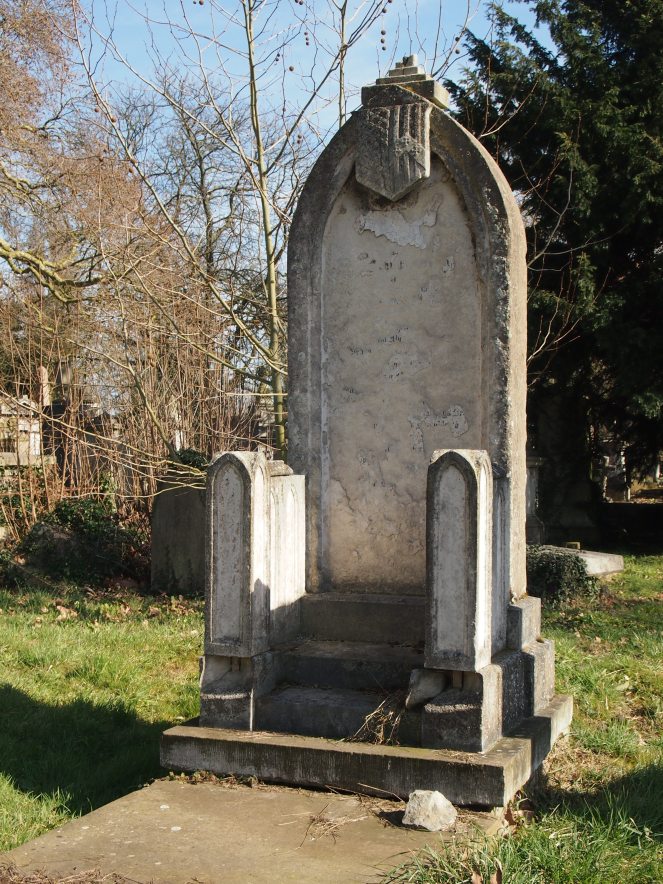
Some monuments combine a number of different styles and symbols. Effigy graves are usually associated with the medieval period, but the magnificent effigy pictured below is surrounded by Classical-style columns.
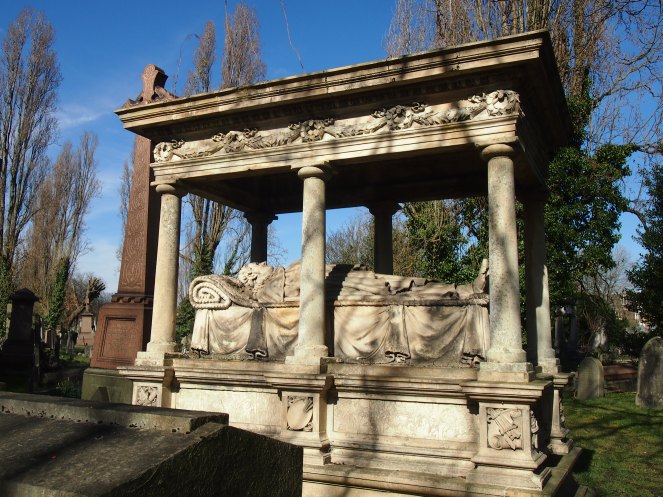
Below the columns are carved representations of artists’ materials, giving us a clue about the occupant of the grave below this effigy. The man it commemorates was William Mulready, an Irish artist who worked in London and was famous for his rural scenes and stationery designs.
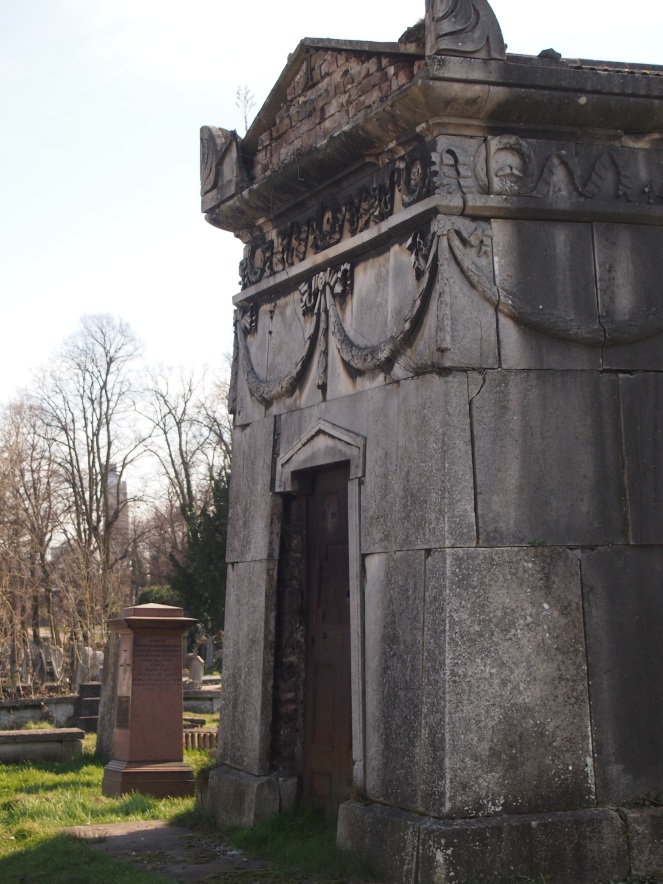
There are so many stunning, dramatic memorials at Kensal Green that it’s impossible to cover each one of them in a single blog post. The wide range of styles and symbols present in the cemetery show the huge variety of funerary fashions that were available to Victorians who had the money to spend on grand memorials to their loved ones. Today, we see such ostentation as vulgar and over the top, but in the 19th Century, where funerals and mourning were big business, and even the Queen herself spent decades in obvious mourning, a dramatic memorial was the ultimate statement of loss.
The Friends of Kensal Green do regular tours of the cemetery – details about times and prices can be found on their website.


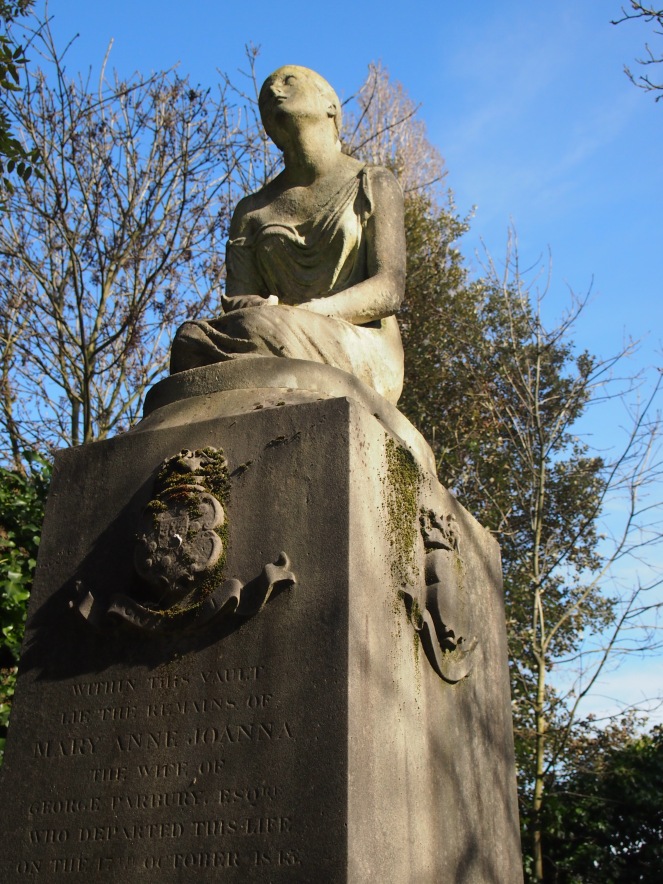
References and further reading
General Cemetery Company – Kensal Green Online http://www.kensalgreencemetery.com/
The Friends of Kensal Green – http://www.kensalgreen.co.uk/
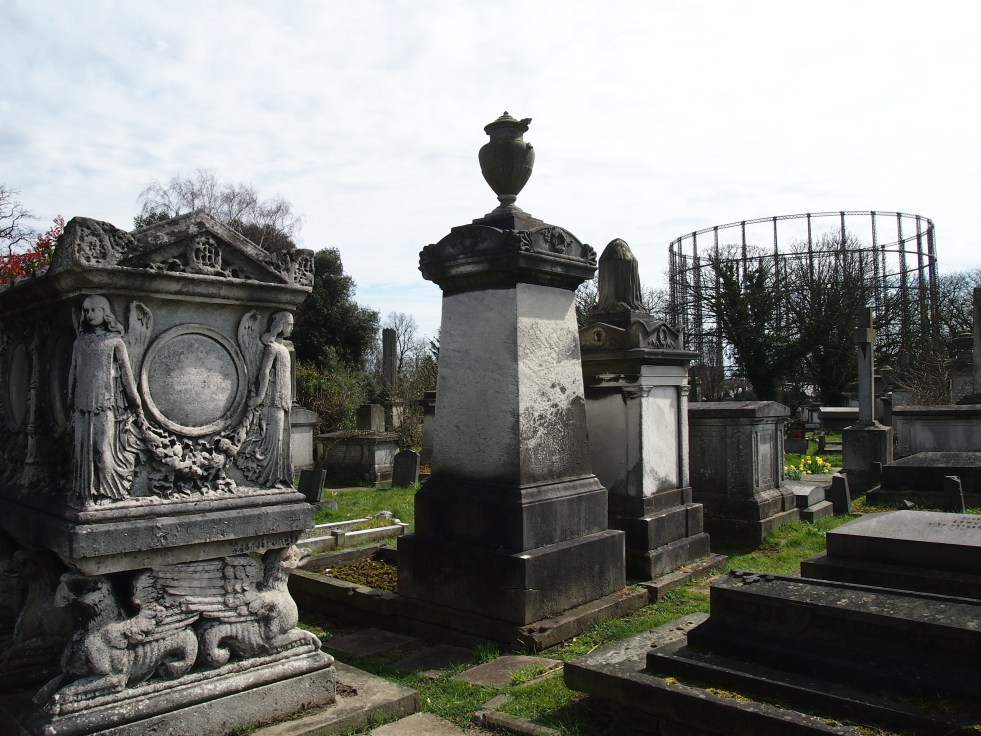

Monumental masonry ain’t wot it used to be – it’s all about the resin moulding now 🙂 But seriously… while I still and always find the level of arrogance in these sorts of memorials mind-boggling and a bit icky, I also love it that people were willing to go to so much trouble to make a person’s identity literally written in stone!
LikeLike
These days it would be seen as incredibly egotistical (not to mention vulgar) to have such huge, ornate memorials but in the context of the Victorian preoccupation with death they make sense. Plus, it means that there are lots of lovely memorials for the people of today to discover and enjoy 🙂
LikeLike
With so much of the world going down the not-very-long-lasting digital toilet of Facebook, gravestones and tombs may be some of the few social documents we will leave for future generations 🙂
LikeLike
Incredible pictures…well done!
LikeLike
Thank you!
LikeLike
Many thanks. I was here before Christmas and came across the grave of (the) WH Smith. Your pictures are magnificent and commentary excellent
LikeLike
Thank you! There are so many wonderful graves at Kensal Green that it’s absolutely impossible to cover them all in one short blog post.
LikeLike
This is a terrific post. Thanks for sharing this extensive collection of photos and the commentary. I really did enjoy it. Hugs! 😀
LikeLike
Thank you!
LikeLike
Excellent Blog, Brunel’s tomb is relatively modest and quite low which maybe why you have missed it. I have been down to the crypt below the Anglican chapel. If you get the chance do go down, it is very impressive.
LikeLike
I’m hoping to be able to visit the catacombs at some point – I visited the ones at Brompton on their open day a few years ago so must try to get to Kensal Green when they have their open day this year.
LikeLike